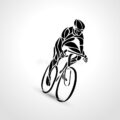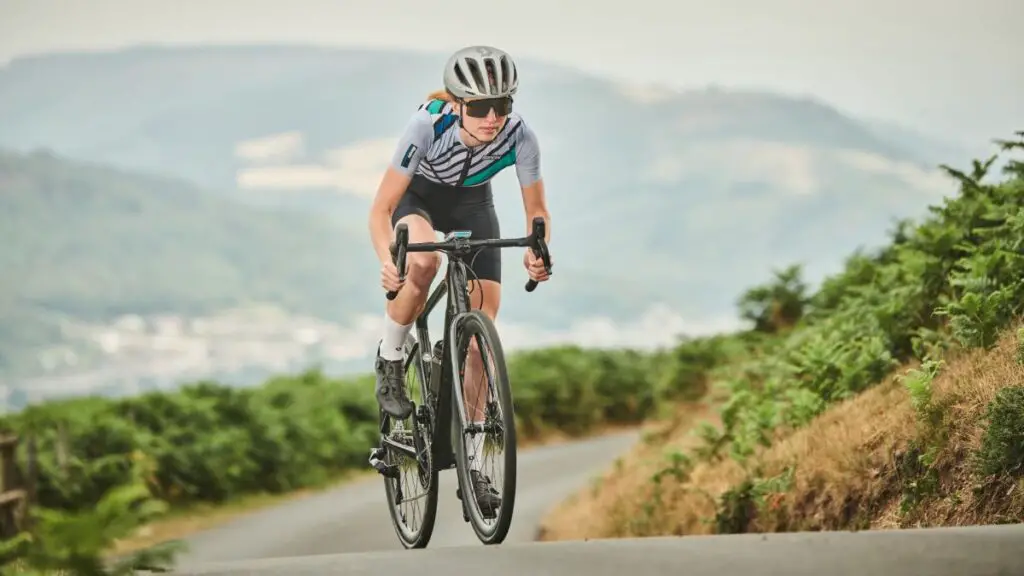How long does it take to get faster at cycling?
To keep improving and progress on your fitness journey, you have to be riding your bike at least three days every week even if you just do short turbo trainer workouts.
The absolute minimum you can ride if you need to see significant fitness gains is at least three rides three days a week.
What is the average speed of a cyclist?
The average speed of a cyclist in the United Kingdom according to Strava is about 15.9 mph or 25.61 kph. The average cyclist in the Netherlands can hit average speeds of 16.72 mph or 26.92 kph.
The average speed tends to be influenced by all manner of factors such as traffic volume, cyclist age, wind direction, experience, humidity, strength, bike ridden, road surface, and terrain.
Some cyclists will get too obsessed with minor changes and be frustrated on slower days even though a slower speed might not be a true reflection of your fitness levels or effort but rather due to changes in conditions.
How long does it take to build up cycling stamina?
If you are going to be doing endurance cycling then you should work on building up base fitness.

If you will be riding in any endurance event (this is any riding longer than 100 miles), you will need to train steady long low-intensity miles for between 12 to 16 weeks to build up aerobic endurance.
You have to do this to make your body adapt to harder rides. By doing this your body will be more capable of using fat stores and overall becoming more efficient at using the stored carbohydrate reserves in the body.
How to train for speed
Not everyone can be out riding four to six hours every day and hence one of the most effective ways to do it for a regular cyclist is to do polarised training which is more schedule friendly.
Polarized training instructs that a cyclist needs to spend 80 percent of their training time riding at moderate intensity while riding at high intensity for the remaining 20 percent of the time.
As such, riders need to combine tough high-intensity riding with slightly more enjoyable aerobic training.
The Training Week
If a cyclist has a full-time job in addition to other life commitments, they would have to find a way of fitting their cyclist training into all that. There are several training categories that include:
Threshold Sessions
Usually abbreviated as FTP or functional threshold power this refers to how much power you can sustain over 60 minutes of hard riding.
This usually depends on your lactate threshold which refers to a specific workout in which you ride at and above your lactate threshold to enhance fitness.
The overall aim of riding and training is to ensure your heart rate remains lower even at higher cadences which means you can sustain your cycling pace for longer.
Interval Training
Interval training is all about alternating between short bursts of intense rides with longer and less intense bouts of less intense riding. If you have a time crunch this can be one of the most effective ways if incorporate training into your day
Training may be as simple as jumping on the turbo trainer for an hour so that you can get your intervals squared away without having to worry about traffic lights or stopping for people crossing the road.
The best thing about interval training is that it significantly improves endurance, power, and fitness, even if you just do two interval sessions a week.
Aerobic Rides
Aerobic cycling refers to any cycling that increases heart rate and ups the body’s energy consumption. Overall, this results in greater fitness as you improve your aerobic capacity.
To do this a cyclist should ride two long rides at a steady pace each week to develop endurance and fitness. If you are riding a stationary bike this can be done by changing the settings to a faster cadence that increases heart rate significantly.
Note that the more you ride the easier cycling will get.
How to improve cycling speed and endurance
If you are looking for a more comprehensive insight into how to increase endurance and cycling speed check out this article. Still, if you are interested in the bullet points then some of the most effective ways include:

- Bending and tucking in elbows
- Listening to music
- Riding with other riders
- Pumping up your bike tires
- Braking less
- Riding on the drops for more aero dynamism
- Practice track standing
- Riding out into a headwind and home in a tailwind
- Losing weight
- Do interval training
- Work on building muscle
- Get aero wheels or an aero bike
- Get tighter clothing and cycling shoes
How does age impact cycling speed and performance
The average cycling speed of a rider is usually indirectly related to age; hence, your performance may decrease as you age.
However, it is important to note that this is not always the case as Chris Horner shocked everyone at the Masters 3 in Australia when he became one of the oldest cyclists to win a Grand Tour.
While physical decline is definitely a factor it is important to remember that before you turn 50 you should experience a minimal physiological decline.
This is because if you exercise and train regularly you will maintain your musculature and only experience minimal drops in your VO2 max.


